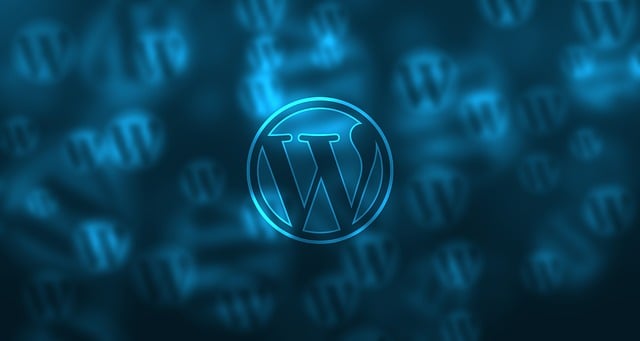Optimizing website performance involves strategic approaches: compressing images without quality loss, minimizing code redundancies, leveraging browser caching, using Content Delivery Networks (CDNs), and upgrading server hardware & software. These techniques enhance loading speeds, boost user experience, improve search rankings, and foster inclusive access for diverse audiences.
Optimizing your website’s loading speed is crucial for enhancing user experience and boosting search engine rankings. In today’s fast-paced digital world, quick load times are essential for keeping visitors engaged. This article explores effective solutions, including image optimization, minimizing code, leveraging browser caching, using Content Delivery Networks (CDNs), and server optimization techniques. By implementing these strategies, you can significantly improve your website’s performance and overall health.
- Image Optimization: Compressing Visuals for Faster Load Times
- Minimizing Code: Removing Unnecessary Scripts and Stylesheets
- Leveraging Browser Caching: Storing Resources Locally
- Content Delivery Networks (CDNs): Distributing Content Globally
- Server Optimization: Upgrading Hardware and Software
Image Optimization: Compressing Visuals for Faster Load Times

Optimizing images is a powerful strategy to enhance your website’s loading speed and overall user experience. With the vast amount of visual content on modern websites, compressing images without sacrificing quality can significantly reduce page load times. This process involves minimizing file sizes while maintaining the essential elements of the image, ensuring that visitors don’t have to wait excessively for your site to display.
One effective method is to utilize image compression tools that offer a balance between file size reduction and visual integrity. Additionally, considering alternative formats like WebP or JPEG 2000 can provide even better results. As you explore various image optimization techniques, remember the importance of balancing aesthetics and performance. For instance, finding us at note-taking methods and staying updated with digital literacy skills will enable you to make informed decisions regarding cultural awareness in your website design choices, ultimately contributing to a faster and more engaging online experience.
Minimizing Code: Removing Unnecessary Scripts and Stylesheets

Minimizing code is a powerful strategy to boost your website’s loading speed. Start by removing unnecessary scripts and stylesheets, which often slow down page rendering. Every extra line of code adds to the load time, impacting user experience and search engine rankings. A thorough review of your website’s HTML, CSS, and JavaScript files can help you identify and eliminate unused or redundant elements. This process is akin to editing a science lab report—each word should serve a purpose.
Imagine optimizing your website as a productivity hack; by streamlining your code, you’re essentially creating a sleek and efficient workflow. Just as career planning involves setting clear goals, minimizing code requires a strategic approach. Remove unused scripts and stylesheets, and you’ll find your website performing like a well-oiled machine. This simple step can significantly enhance page speed, ensuring visitors have a seamless experience, and search engines recognize your site’s value. Remember, every second counts when it comes to keeping users engaged.
Leveraging Browser Caching: Storing Resources Locally

Leveraging browser caching is an effective strategy to significantly enhance website loading speed. By storing resources locally on the user’s device, subsequent visits can be quicker and more efficient. When a visitor accesses a site for the first time, their browser downloads various elements such as images, scripts, and stylesheets. However, on subsequent visits, these resources can be retrieved from the local cache, reducing the need to download them again from the server. This process not only speeds up page load times but also reduces the strain on the website’s servers, leading to improved performance overall.
Plagiarism avoidance online research tools and creative writing prompts can benefit from this technique as well. Storing reference materials, articles, or even generated content locally can enhance user experience, especially for those with slower internet connections. Additionally, cultural awareness plays a role in understanding that users from different regions may have varying access to resources, making browser caching an inclusive solution. Visit us at any time to learn more about enhancing your website’s performance and developing valuable skills like time management.
Content Delivery Networks (CDNs): Distributing Content Globally

Content Delivery Networks (CDNs) play a pivotal role in optimizing website loading speed by distributing content globally. Instead of hosting all content on a single server, CDNs utilize a network of edge servers located around the world. When a user accesses a site, their request is routed to the nearest edge server, significantly reducing latency and improving response times. This is particularly beneficial for websites with a diverse global audience, ensuring that visitors from different regions experience swift load times regardless of their geographical location.
The history essay structure might seem like a distant consideration compared to website performance, but efficient content delivery indirectly supports academic endeavors. By minimizing page load times, students and researchers can enjoy seamless access to online resources during study breaks, enhancing productivity and knowledge acquisition. Furthermore, organizations skilled in managing CDNs can significantly improve user engagement, leading to better conversion rates. So, if you’re looking to optimize your website’s speed and enhance user experience, consider giving us a call at organization skills for expert guidance.
Server Optimization: Upgrading Hardware and Software

Optimizing your website’s performance starts with robust server infrastructure. Server Optimization involves both hardware and software upgrades, which can significantly enhance speed and stability. Upgrading to faster processors and adding more memory (RAM) ensures that your server handles heavy traffic efficiently. This step is crucial for websites experiencing slow loading times, as even a small increase in hardware capacity can yield notable results.
Additionally, keeping server software up-to-date is essential. Regular updates often include performance improvements and security patches, addressing potential issues before they impact user experience. By implementing these optimizations, website owners can expect better page load times, reduced bounce rates, and improved overall website health, ultimately enhancing user satisfaction and encouraging longer visits. Remember, quick loading times are not just about aesthetics; they significantly contribute to a positive user experience and can even influence search engine rankings, as search algorithms prioritize faster websites. Consider visiting us at career planning anytime for more insights into enhancing your website’s performance through strategic optimization techniques.
Optimizing website loading speed is a multifaceted approach that involves strategically employing techniques like image compression, code minimization, browser caching, leveraging CDNs, and server upgrades. By implementing these solutions, web developers can significantly enhance user experience, reduce bounce rates, and improve search engine rankings. Remember that each website is unique, so tailoring these strategies to fit specific needs is key to achieving the best results.

Leave a Reply